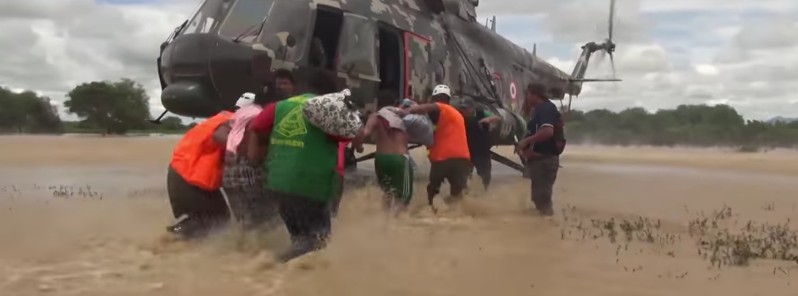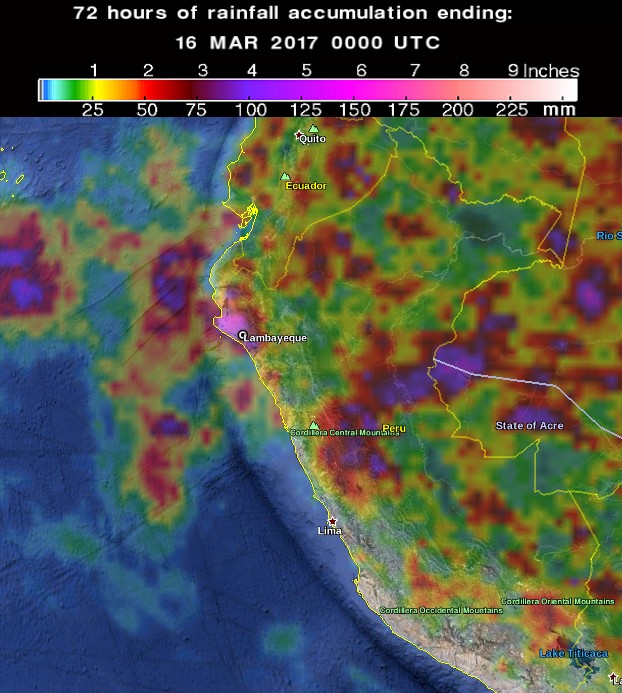Major flooding after heavy rains hit Peru

Heavy rainfall over the past couple of days has caused flooding in several regions of Peru, forcing the government to deploy army personnel to help rescue people.
The worst affected was Lambayeque, northern Peru where the Peruvian Army deployed a helicopter on March 15 to help rescue people trapped by floodwaters. More than 400 people were rescued from rural villages in Jayanca, Illimo and Pacora, the government said.
Defence Minister Jorge Nieto said armed forces will remain in the area to carry out further rescues.

Video courtesy Ruptly
The video below shows flooding in southern Peru on March 15:


Video courtesy Breaking Disaster
Shocking scenes in #Chosica, #Peru 15.3.17 after heavy #rains several rivers burst banks causing widespread flash #flooding ! 6/30 #eustorm pic.twitter.com/d4ekMxuYo9
— #eustorm (@EUStormMap) March 16, 2017
After a period of near drought conditions, emergencies due to heavy rains, floods and landslides have been occurring in northern regions of Peru since January 31, 2017.
On February 6, the government said at least 22 people died in recent floods and landslides. 1 105 houses were destroyed, 54 schools and 47 health centers damaged, and 215 km (133 miles) of roads severely affected.
Nationwide, more than 170 000 people have been affected by floods and landslides by February 7. Of those, 85 000 were in Lambayeque, the worst affected.


Heavy rains, floods hit Peru – March 2017. 72 hours of rainfall accumulation by 00:00 UTC on March 16, 2017
Since the start of the rain season in November, at least 48 people were killed throughout the country.
Peru's rainy season lasts from November to April. The wettest months are January through April.
Featured image: Army deployed to help rescue people from floodwaters in northern Peru, March 15, 2017. Credit: RUPTLY

Well I have seen a lot of articles on how to increase rainfall, but I have not seen an article on how to reduce rainfall, so here is an idea: In the Arctic, with melting and so on, the air has a lot of moisture and does not have to rise far before clouds form. In the tropics there is a lot of convection and so moisture is taken out of the air when rain forms from this convection. The drier air has to rise further for clouds to form and so clouds in the tropical regions are higher generally – see http://www.flsc.org/portals/12/PDF/UnderstandingTheSky.pdf Now if one uses solar air heaters, which heat massive volumes of air with a relatively small amount of solar energy ( see http://airartist.blogspot.co.za ) one can cause convection and drying out of the air. If a large number of solar air heaters were used strategically (one on every rooftop), could this significantly dry out the air and reduce the probability of flooding?